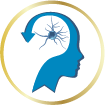The use of non-invasive brain stimulation in the classroom has become an increasingly popular concept for students and educators alike. By using techniques such as transcranial direct current stimulation (tDCS) and transcranial magnetic stimulation (TMS), educators can help their students improve their cognitive abilities, such as learning, memory, and problem solving.
What is non-invasive brain stimulation?
Non-invasive brain stimulation is a form of neurostimulation that does not require surgery. It is typically done by placing electrodes on the scalp to send electrical impulses directly to the brain. This method of stimulation has been used for decades to treat conditions such as Parkinson’s disease, depression, and even ADHD.
How can it be used in the classroom?
Non-invasive brain stimulation has been found to be a useful tool for educators to help their students improve their cognitive abilities. It can be used to help students learn more quickly, remember more information, and solve problems more effectively. It has also been used to improve motivation and focus, which can help students stay on task and perform better in class.
What are the benefits of using non-invasive brain stimulation in the classroom?
- It can help students improve their cognitive abilities such as learning, memory, and problem solving.
- It can help students stay focused and motivated in the classroom.
- It can help reduce stress and anxiety in students.
- It can help improve academic performance.
What are the risks of using non-invasive brain stimulation in the classroom?
- There is the potential for side effects, such as headaches, dizziness, and fatigue.
- It is not yet known if there are any long-term effects of using non-invasive brain stimulation.
- It is important to use the proper safety precautions when using non-invasive brain stimulation.
Conclusion
Non-invasive brain stimulation can be a useful tool for educators to help their students improve their cognitive abilities. However, it is important to use the proper safety precautions when using non-invasive brain stimulation and to be aware of the potential risks and side effects.












Leave a comment